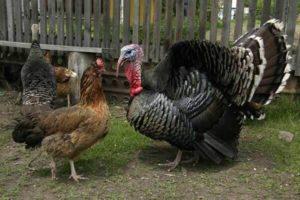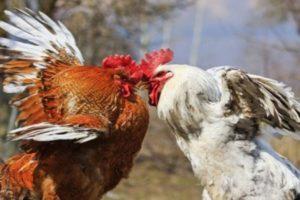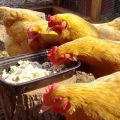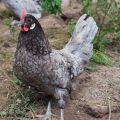3 best methods to tell if a chicken is rushing or not
Keeping laying hens in the household is beneficial, provided that the egg production is good. Under the same conditions of feeding and keeping, not all chickens show consistently high egg production. The breeder must be able to determine whether a hen is rushing in the high season or not in order to remove the unusable bird from the flock in time. Inspection (grading) and culling of birds is carried out 3-4 times a year.
What does productivity depend on?
The egg production of chickens rests on three "whales":
- genetic "leaven";
- full feeding;
- correct content.
To obtain a large number of eggs, egg breeds or crosses should be started: Leghorn, Rhodonite, Dominant, Russian White.
Representatives of these breeds can lay up to 300 large eggs per year, but they cannot get meat from them. In personal subsidiary farms, meat and meat chickens (Kuchinskaya, Adlerskaya, Amroks) are especially popular, laying about 200 eggs a year, but also giving a weighty carcass.
Balanced feeding of the livestock allows you to unleash the full potential of the bird. You can feed the chickens with a full-scale factory feed for laying hens or prepare the mixture yourself. The diet of poultry, in addition to grain, includes greens and vegetables, animal feed (dairy products, meat and fish). Be sure to give mineral additives (chalk, limestone, shell) for the strength of the shell.
To preserve egg production, especially in winter, chickens are kept in warm and light chicken coops. Comfortable temperature for poultry is from +15 to +25 degrees.
In order for the laying hen to continue laying eggs in winter, she is given a 12-14 hour daylight hours.

When a healthy layer starts to lay
Normally, pullets of egg or beef breeds begin to lay their first eggs at the age of 5-6 months. Records in this regard are Leghorns, they begin to rush as early as 4.5 months.
The age at the start of lay is influenced by environmental conditions. If the hen grows up in autumn, and the poultry farmer did not place the bird in a warm shed with additional lighting in time, the bird will be brought in later.
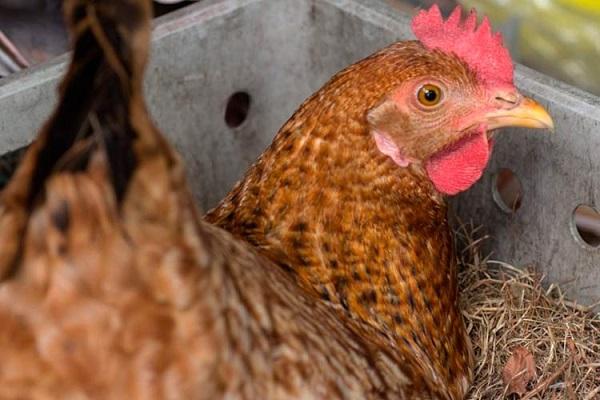
How do you know whether a hen is laying eggs or not?
On average, a hen at the peak of laying, lays 1 egg daily for 3-4 days, then takes a break for 1-2 days. A bad laying hen can only lay 1-2 eggs a week, which does not justify even feeding her, let alone profit.
Determination of layers by palpation
The surest way, but it takes some practice. It is possible to identify a hen in a state of active oviposition by the distance between the ends of the pubic bones. These are semicircular bones extending from the ischium.In a good laying hen, the distance between the tips of the pubic bones is 4-5 cm, and in a bad hen, no more than 2 cm.
To probe the chicken, they take it in their hands and put a palm on its stomach, fingers towards the cloaca. Immediately under the cloaca, under the skin, the pubic bones are well felt. In order not to run after the ruler, the distance is measured with your fingers. In a healthy laying hen, 3-4 toes folded together will fit between these bones.
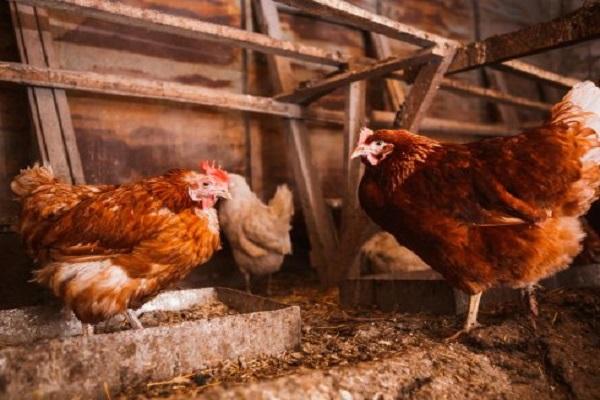
External signs of a laying hen
An actively laying hen may not look "like a picture", it spends all energy and nutrients to form an egg. The plumage of the hen may be "disheveled", with a minimum of body fat.
Signs of an actively laying hen include:
- the scallop of the chicken is bright red, in egg breeds it is large and hangs to one side;
- legs are bright yellow, widely spaced;
- the belly is voluminous, slightly hanging;
- the back is straight and even;
- the shape of the body resembles a triangle with an extension towards the hips.
The cloaca of the rushing chicken is slightly swollen, and a small amount of transparent mucus may be released from it. In a non-flying bird, the cloaca is dry, the opening is tightly compressed and has a small size.

Other ways to determine
If free time allows, you can often go into the barn at a certain period of time (for example, during the week) and mark the chickens sitting on the nest with green paint.
The bulk of hens rush from 8 am to 2 pm, therefore, with a small population, it is not difficult to track the best layers.
By the number of marks on the plumage, you can even determine how many times a bird has been demolished in a week.

How to increase egg production?
The hen lays the maximum number of eggs in the first and second years of life, then egg production decreases. This means that the flock must be formed from a bird of this age. The presence of a rooster in the hen house is not necessary (if there is no desire to remove the chickens), but with the owner of the courtyard, the chicken feels protected. It is noticed that the presence of a rooster (1 in 12-15 chickens) has a positive effect on egg production.
In winter, when birds are locked in a barn, eating the right diet has a huge impact on productivity.
If the chickens are fed with homemade compound feed, the Zdravur Laying or Ryabushka premix must be added to the grain mixture. The premix contains all vitamins and microelements necessary for poultry.
Laying hens need to be fed well, but not overfeed. The daily rate of grain feed for 1 chicken is 140-150 g. It is better to exclude boiled potatoes from the chicken menu, as the bird gets fat from it.
